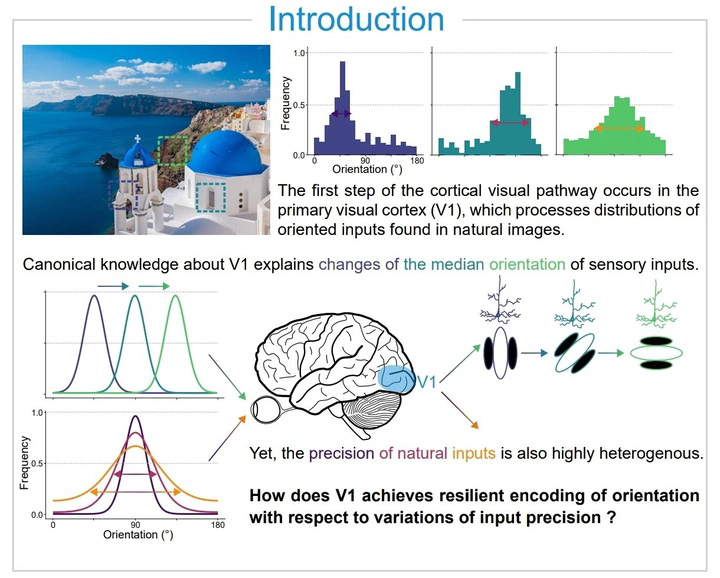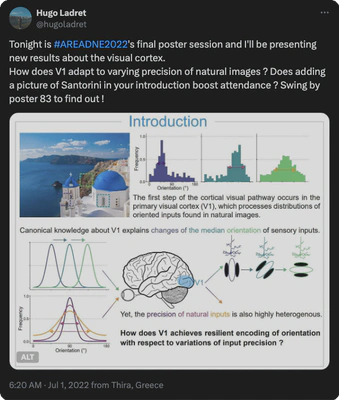
Abstract
On a daily basis, the primary visual cortex (V1) detects oriented elements from sensory inputs made of orientation distributions. To remain selective to a large variety of possible input configurations, V1 has to account for the precision of these inputs. Here, we decode the population activity of V1 to uncover a neural code which achieves invariance to input precision. Extracellular recordings were made from 247 V1 neurons in anesthetized cats in response to visually presented naturalistic textures (a). These textures were generated from two parameters : orientation and orientation precision. Using multinomial logistic regression, we were able to recover these two parameters from the population activity. We report two previously unknown types of neurons in V1 : predominantly infragranular neurons that encode solely orientation, and predominantly supragranular neurons which co-encode both orientation and its precision. Using a simple mean-rate population model, we observed that recurrent cortical inhibition can single-handedly account for the existence of these two types of neurons.

- for a follow-up, check out(2022). Recurrent cortical connectivity in the primary visual cortex supports robust encoding of natural sensory inputs. Proceedings of the FENS Forum 2022.
- This poster is presented in the following paper (published in Nature Comm Biology):